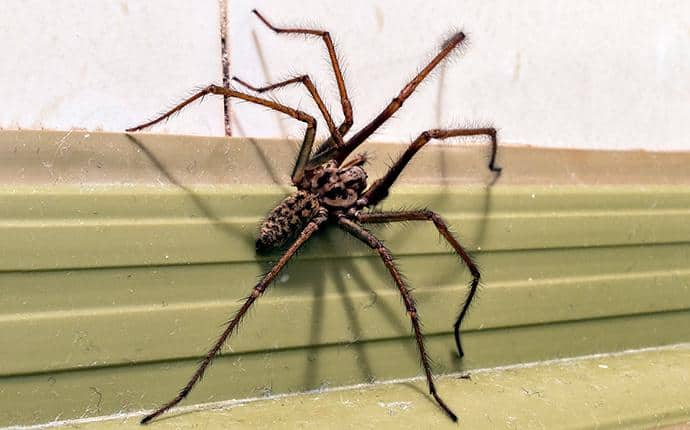The Truth About Wolf Spiders in Washington State: What You Need to Know
Washington State, with its diverse landscapes ranging from lush rainforests to arid deserts, is home to a fascinating array of wildlife, including the often-misunderstood wolf spider. These impressive arachnids are a common sight in homes and gardens across the state, sparking curiosity and, sometimes, a bit of fear. But what’s the real story behind these eight-legged creatures? Let’s delve into the truth about wolf spiders in Washington State, separating fact from fiction.
What are Wolf Spiders? An Introduction
Wolf spiders belong to the family Lycosidae, a large and diverse group characterized by their robust build, excellent eyesight, and active hunting style. Unlike web-spinning spiders, wolf spiders are hunters, actively pursuing their prey on the ground. They get their name from their hunting behavior, which resembles that of wolves, stalking and ambushing their victims.
In Washington State, you’re likely to encounter several different species of wolf spiders, each adapted to specific habitats. They range in size from relatively small to quite large, with body lengths that can exceed an inch. Their color varies, often blending in with their surroundings, with shades of brown, gray, and black being common.
Identifying Wolf Spiders in Washington
Knowing how to identify a wolf spider is crucial for proper identification and understanding. Here’s what to look for:
- Size: Variable, but can be quite large, with some species reaching a body length of over an inch.
- Appearance: Typically have a mottled brown, gray, or black coloration, often providing camouflage.
- Eyes: Possess a distinctive eye arrangement, with eight eyes arranged in three rows. Two large eyes in the front are characteristic.
- Hunting Behavior: Actively hunt on the ground rather than building webs.
- Speed and Agility: Known for their quick movements.
Where to Find Wolf Spiders in Washington
Wolf spiders are adaptable creatures, thriving in a variety of habitats across Washington State. You can find them:
- Outdoors:
- Gardens and Yards: Common in grassy areas, under rocks, and in leaf litter.
- Forests and Woodlands: Found in both coniferous and deciduous forests.
- Deserts and Drylands: Some species are adapted to arid environments.
- Indoors:
- Basements and Garages: Often wander indoors, especially in search of prey or shelter.
- Homes: May occasionally be found in other areas of the house, but are less likely to establish a permanent presence indoors.
Are Wolf Spiders Dangerous? Debunking Myths
One of the biggest misconceptions about wolf spiders is their perceived danger. The truth is, wolf spiders are generally not dangerous to humans.
- Bite: They can bite if provoked or threatened, but their venom is not considered medically significant to humans. The bite may cause some localized pain, redness, and swelling, similar to a bee sting.
- Venom: Their venom is primarily designed to subdue insects and other small prey.
- Aggression: They are not inherently aggressive and will typically avoid humans if possible.
Wolf Spiders and Pest Control: A Natural Benefit
While many people aren’t thrilled to see a spider in their home, wolf spiders can actually be beneficial:
- Natural Pest Control: They are voracious predators, consuming a wide range of insects, including:
- Cockroaches
- Crickets
- Ants
- Other Spiders
- Reduced Need for Pesticides: By preying on common household pests, wolf spiders can help reduce the need for chemical pest control.
Living with Wolf Spiders in Washington
If you encounter wolf spiders in your home, there’s usually no need for alarm. Here are some tips for coexisting peacefully:
- Prevention: Seal cracks and crevices in your foundation and around windows and doors to prevent them from entering.
- Reduce Attractants: Keep your home clean and tidy to reduce the availability of prey insects.
- Removal: If you wish to remove a wolf spider, you can gently capture it in a jar and release it outdoors. Avoid direct contact.
- Professional Assistance: If you have a significant infestation or are concerned about spiders in your home, consider contacting a pest control professional.
Conclusion: Understanding the Wolf Spider’s Role
Wolf spiders are a common and fascinating part of Washington State’s ecosystem. While their appearance may be intimidating, they are generally harmless to humans and play a beneficial role in controlling insect populations. By understanding their behavior, habitat, and role in the environment, we can appreciate these creatures and coexist peacefully.
Frequently Asked Questions (FAQs)
Are wolf spiders poisonous?
- No, wolf spiders are venomous, not poisonous. They inject venom through their fangs to subdue their prey. Their venom is generally not considered dangerous to humans.
What do wolf spiders eat?
- Wolf spiders are carnivores, primarily feeding on insects, other spiders, and small invertebrates.
How do I get rid of wolf spiders in my house?
- Seal entry points, reduce food sources (insects), and consider capturing and releasing them outdoors. If the problem persists, consult a pest control professional.
Do wolf spiders build webs?
- No, wolf spiders are hunting spiders and do not build webs to catch their prey.
When are wolf spiders most active?
- Wolf spiders are most active during the warmer months, particularly at night.




